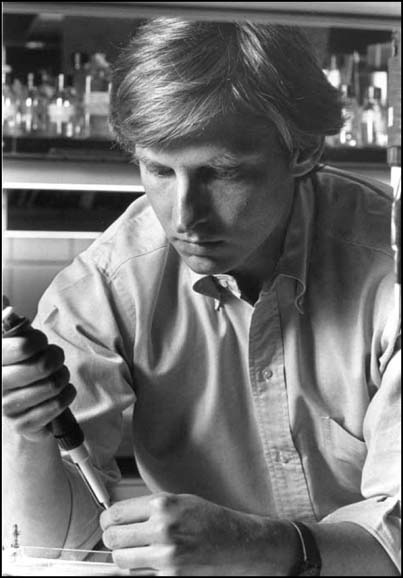Chicago—West Nile Virus, SARS, Lyme disease, HIV—these aren’t our parents’ infectious diseases anymore. When it comes to diagnosing the often misleading manifestations and defining the puzzling pathways behind these and many other diseases, today’s physician must be part scientist, part sleuth.
Explore This Issue
July 2006“When we think in terms of traditional infections, we like to think of effects that are manifested at the site of the infection, such as polio virus where you have paralysis, or infections of the intestinal tract where you have symptoms like diarrhea,” said W. Ian Lipkin, MD. “In recent years, though, new paradigms are emerging… and there are much more complicated mechanisms to consider.”
Dr. Lipkin discussed the significance of these new paradigms as the Triological Society’s Presidential Speaker here at the 2006 Combined Otolaryngology Spring Meetings (COSM). Dr. Lipkin is the Greene Professor of Epidemiology and Professor of Neurology and Pathology at the Mailman School of Public Health and College of Physicians and Surgeons at Columbia University in New York City. He is also the director of the Jerome L. and Dawn Greene Infectious Disease Laboratory and principal investigator of the Northeast Biodefense Center.
 Dr. Ian Lipkin delivered a talk on “Emerging Paradigms in Infectious Diseases” as the Presidential Speaker at the Triological Society portion of the Combined Otolaryngology Spring Meetings in Chicago.
Dr. Ian Lipkin delivered a talk on “Emerging Paradigms in Infectious Diseases” as the Presidential Speaker at the Triological Society portion of the Combined Otolaryngology Spring Meetings in Chicago.Emerging Paradigms
In the late 1800s, the German physician Robert Koch, in an effort to demonstrate that tubercle bacillus was responsible for tuberculosis, defined the set of criteria that must be present in order to determine a causal relationship between a microbial agent and an infectious disease. Koch’s Postulates held that the microbe had to be present in every case of the disease; it had to be specific; and scientists had to be able to isolate it, grow it, and introduce it into animals to cause a similar disease. And, for the past century or so, that has all pretty much held true.
“In this new era of molecular microbiology, however, Koch’s Postulates don’t work,” Dr. Lipkin said. “We’re not entirely sure yet what the new postulates will be. But we do know that there are microbes that we can’t grow in the laboratory, that not everybody infected with the same agent has the same manifestations, and that the sequelae may be long term.”
Dr. Lipkin points to instances of disease where the infection itself is not the problem, but the immune response of the infected host and the resulting damage—such as a virus or bacterium that manifests in immunosuppression, which may predispose to a variety of other disorders.
Leave a Reply